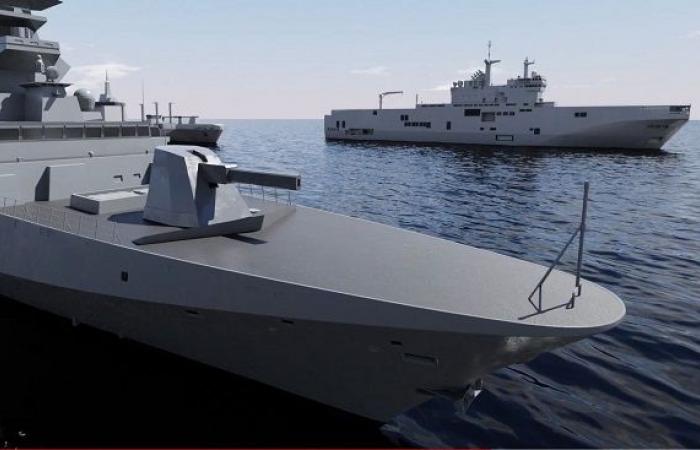
For a long time, the US Navy, via the Office of Naval Research [ONR]was at the forefront of research aimed at developing an electromagnetic gun [ou Electromagnetic Railgun – EMRG]supposed to “revolutionize” naval artillery because of the advantages it is likely to offer. Started in 2005 and involving BAE System and General Atomics, this project seemed to be on the right track… However, due to a lack of sufficient budgetary funds to carry it out, it is now slowing down, priority having been given to the development of hypersonic missiles .
However, other countries are interested in this technology. Thus, China suggested that it had tested an electromagnetic cannon from the amphibious assault ship Haiyang Shan… Which no evidence has come to corroborate to date.
Japan has also embarked on the development of such a weapon. Not without success, moreover, given that, in October 2023, the Japanese Ministry of Defense agency for technology, acquisitions and logistics [ATLA] made a first shot with an EMRG from a ship. With a power of at least 5 megajoules, this cannon would have been able to deliver 40 mm projectiles at a speed of 2230 m/s [soit Mach 6,5].
Moreover, Japan recently sealed a partnership with France and Germany in this area with the signing of a TOR type agreement. [termes de références] supposed to open “the way to cooperation” on electromagnetic weapons technology between ATLA and the Franco-German Research Institute of Saint-Louis [ISL]. And this while the latter has developed an “electromagnetic launcher” called PEGAGUS as well as the “RAFIRA” cannon, capable of firing salvos with 25 mm projectiles, with accelerations of more than 100,000 G.
This expertise also led the European Commission to designate the ISL to coordinate the PILUM project. [Projectiles for Increased Long-range effects Using ElectroMagnetic railgun]which aimed to demonstrate the possibility of “launching hyper-velocity projectiles with precision over a distance of several hundred kilometers”. Having kept its promises, it has since given rise to the THEMA program [TecHnology for Electro-Magnetic Artillery]launched in June 2023 with a budget of 15 million euros, financed by the European Defense Fund [FED].
That being said, at the same time, and without giving many details, the General Directorate of Armaments [DGA] unveiled a project which, carried out under the aegis of the ISL, was to result in an electromagnetic gun intended for the French Navy. Has significant progress been made since then?
The answer will be given during the Euronaval show. Indeed, the Defense Innovation Agency announced that it would present the “RAILGUN electromagnetic gun project”, supported by the ISL.
“Faced with hyper-velocity or saturation threats, Europe needs more efficient artillery at low cost. RAILGUN is an innovative electromagnetic cannon installed on the bow of a building. […] This disruptive technology represents several advantages”, including a “significantly extended firing range [plus de 200 km]an “anti-aircraft defense improved by the reduction of flight time”, a “lethality increased by the impact speed force” and an “increased ammunition carrying capacity due to the absence of propellant charges”, explains ugly.
For its part, the ISL has only specified that the electromagnetic cannon that it will present during Euronaval is capable of “launching projectiles at speeds of up to 3,000 m/s”… or 10,800 km/h in again Mach 8.7… And this while a speed is considered to be hypersonic from Mach 5.
As a reminder, to operate an electromagnetic gun, a high intensity electric current must circulate between two conductive rails in order to create a magnetic field. Then, thanks to the Laplace force, the projectile – also a conductor – will undergo a strong acceleration before being ejected from the tube at a very high speed. Obviously, this requires meeting several challenges in different areas, starting with materials, which are subject to very significant mechanical constraints. It is also necessary to find a sufficient source of energy that can be “released” almost instantly and be able to guide the projectiles, especially when they are hypervelocity.





